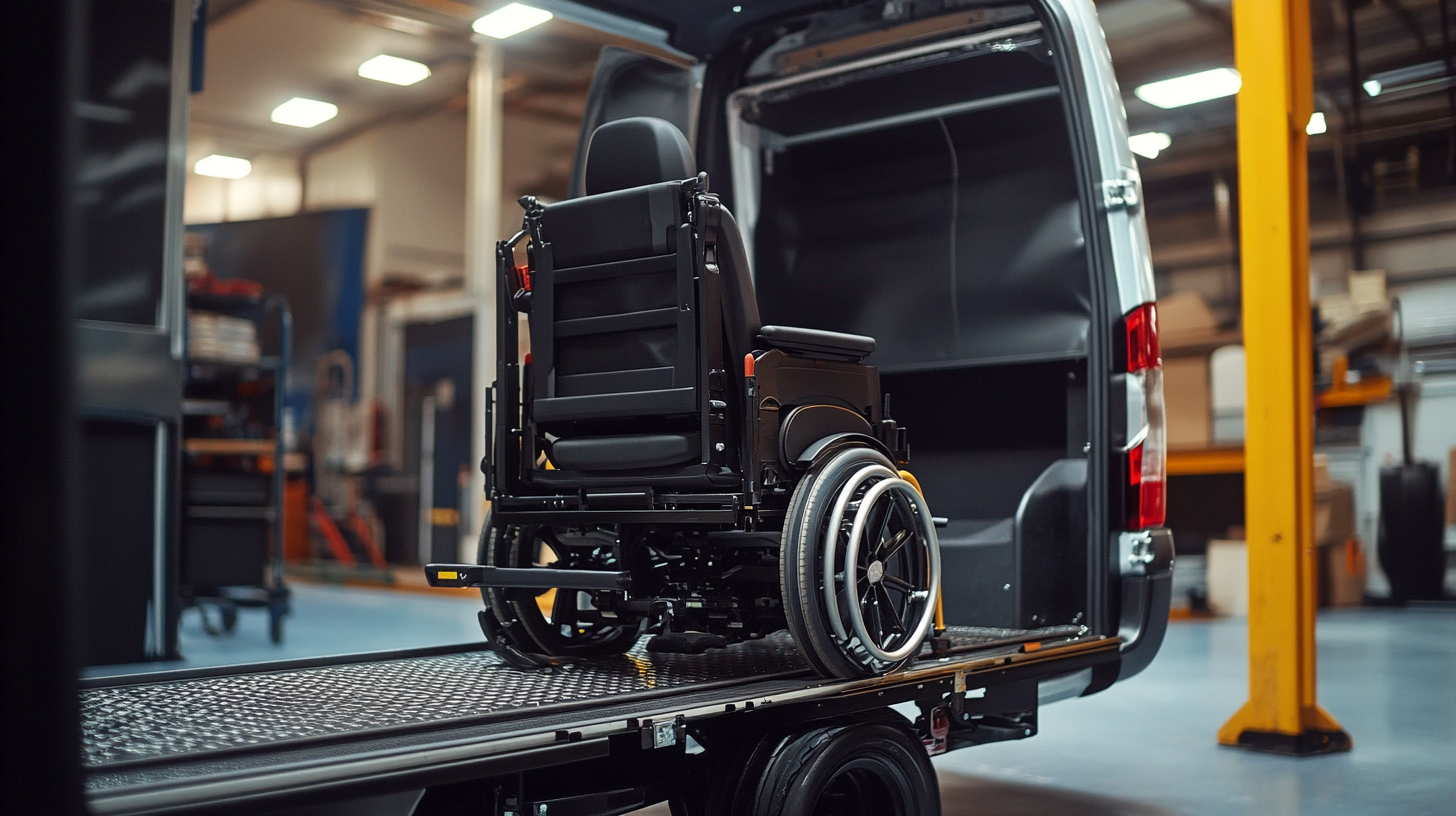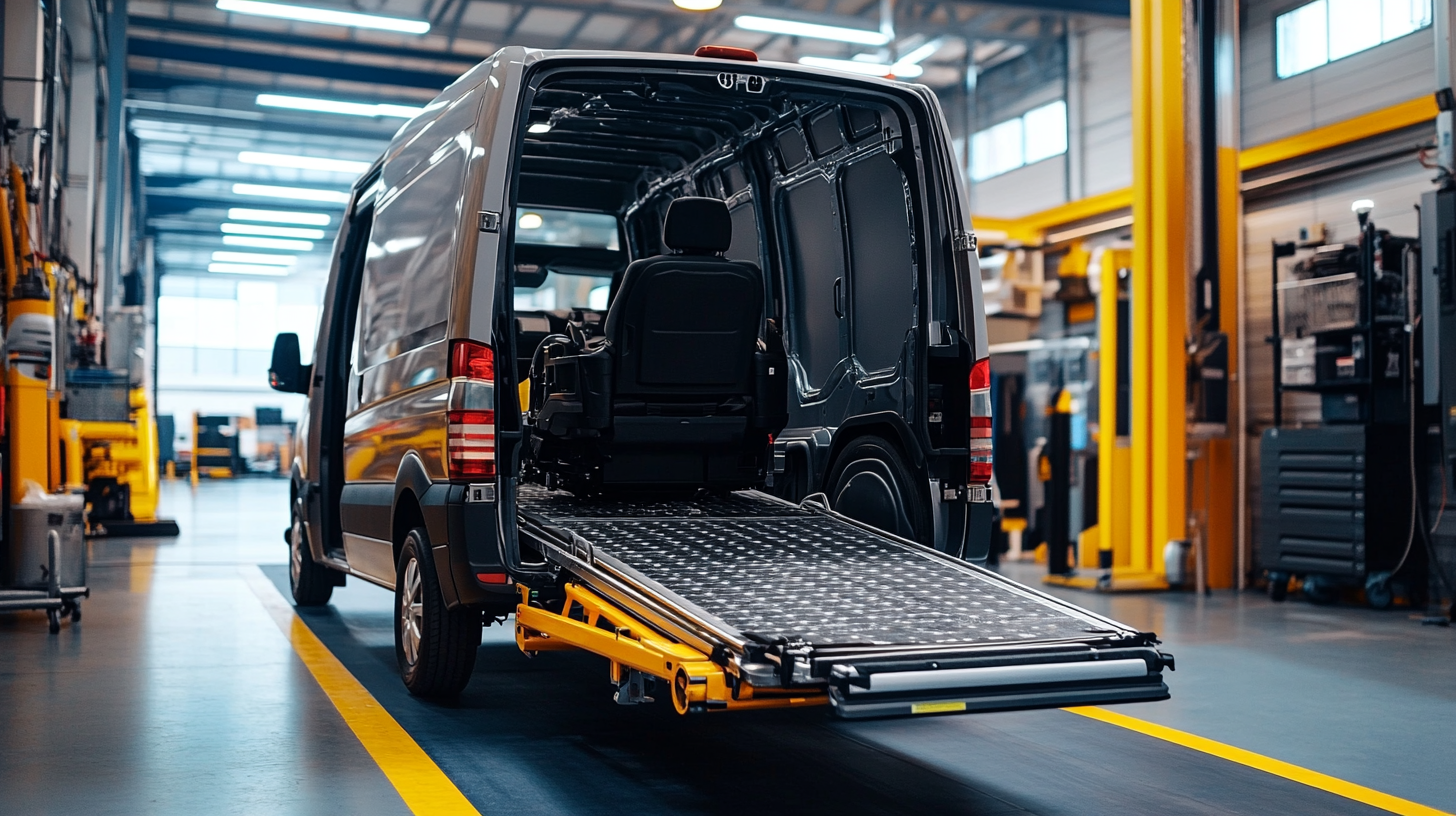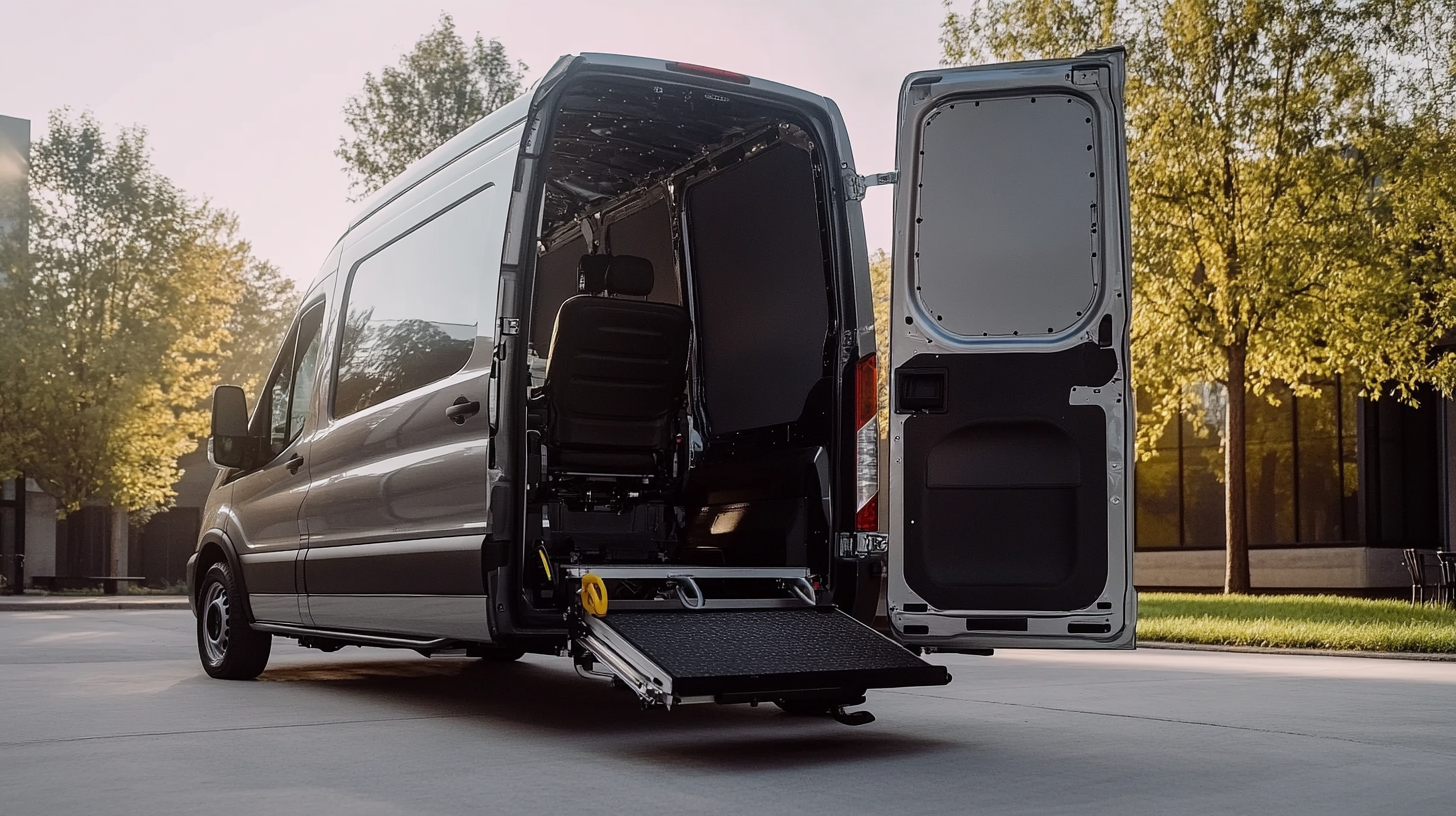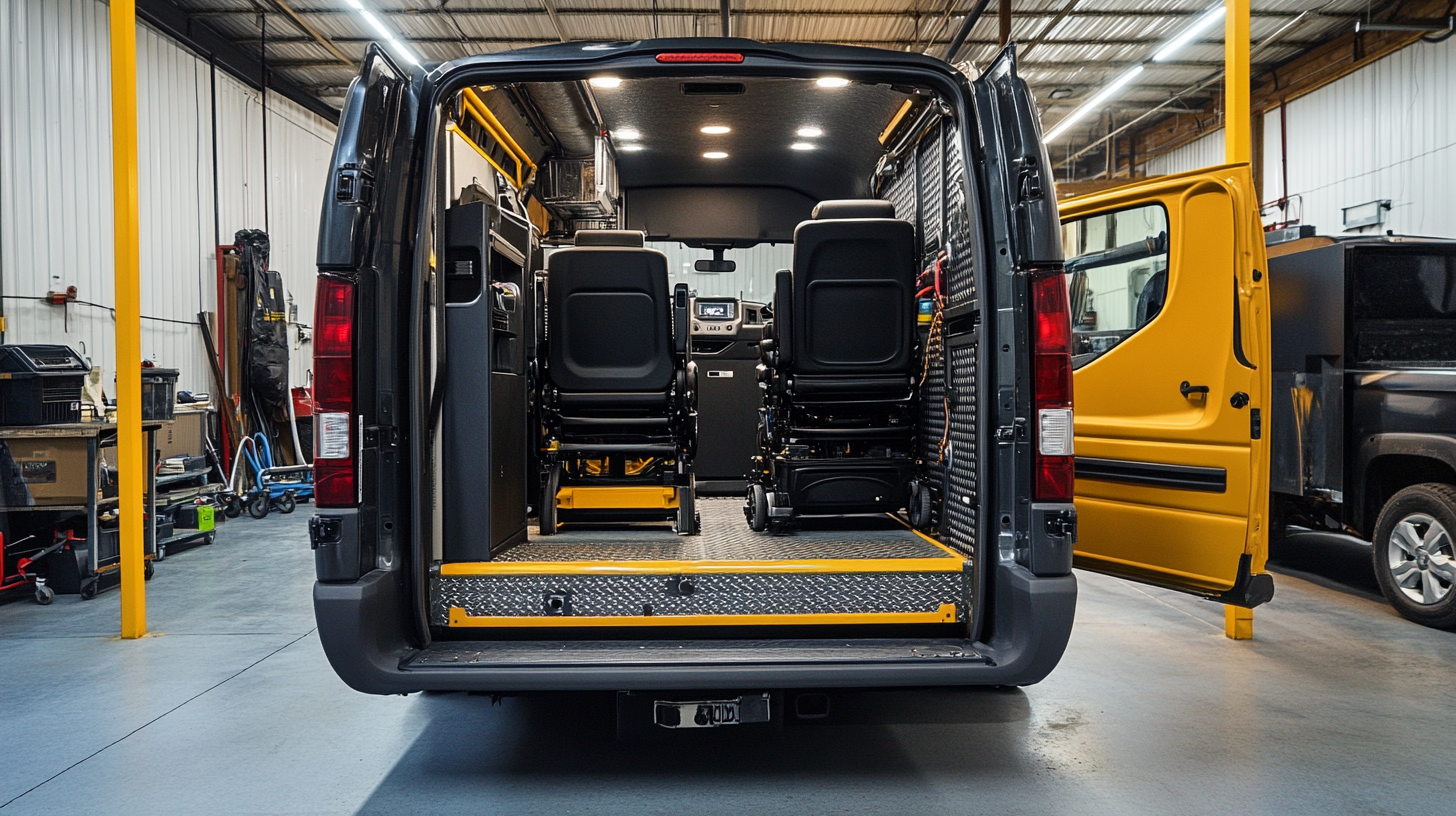Understanding the Benchmarks for Wheelchair Accessible Van Production
Accessibility in transportation has gained ground in recognition in the last few years, especially for those who are mobility challenged. Among the various alternatives available, the wheelchair accessible vans are one of the most vital options, providing users dependent on wheelchairs with freedom and independence. It is important to know the parameters that production is based upon so that vehicles meet safety, comfort, and most importantly, suitability aspects for their respective users.
While manufacturers are pursuing innovation and improvement in the design of wheelchair accessible vans, they also observe the strict industrial benchmarks that originate from the quality and effectiveness of the vehicles. Such benchmarks are essential, as they help to tell the story of the driving force behind design considerations and safety standards, which ultimately affects even how the vehicles are manufactured. This blog seeks to help unearth that pillar of production-process benchmarks to manufacturers, consumers, and everybody who makes this critical user's experience possible. The aim is to break down such standards into familiar segments, thereby promoting an understanding of what makes a wheelchair accessible van more than just a meaningless car-it is, for many, a lifeline.

Significance of Benchmarks in Accessible Vehicle Manufacturing
Usually, benchmarks in accessible vehicle construction serve as important guidelines for ensuring that wheelchair accessible vans will fulfill diverse customer needs. Performance, safety, and usability are some of the parameters upon which these benchmarks direct the manufacturers about how well their designs should fit.
Moreover, the World Health Organization has claimed that there are well over 1 billion people with some form of disability in the entire world, which makes it imperative to create vehicles that perform functional tasks but also promote independence and mobility. Research has also proven that integrating users' feedback from the beginning of the design stage increases the effectiveness of the accessible feature. According to a report by the National Mobility Equipment Dealers Association (NMEDA), vehicles designed with direct user input would have a 30% increased level of satisfaction. Also, buildings that met the key benchmarks, such as Americans with Disabilities Act (ADA) specifications, offered adequate access space stability and ease, ultimately serving to create an inclusive transport environment.
Benchmarks change with the advancement of technology. New innovations in materials and design techniques will permit even lighter and more efficient wheelchair accessible vans. For example, it was indicated in research recently published that advanced composite materials might cut a vehicle's weight by 20%, thus improving fuel economy and handling. In this interplay between stringent benchmarks and cutting-edge technologies, lies the future accessibility of modern transportation and hence mobility as a right conferred on communally enjoyed by all.

Key Features Required for Wheelchair Accessible Vans
Constantly changing the state of wheelchair-friendly vans involves an understanding of the main features that make these vehicles functional and easy to use. Accessibility means more than just fitting a ramp or lift; it is a comprehensive design that allows for easy use from the viewpoint of both passengers and caregivers. A spacious interior is one prime feature of accessible vans, allowing for easy maneuverability. Sufficient head and leg room to fit various sizes and types of wheelchairs come into play here as well.
In addition, the ramp or lift system is critical and should be reliable and safe. Manufacturers are investing more resources in designs allowing ramp systems to be automatically deployed and retracted with low effort so users may board the vehicles with little physical exertion. Non-slip surfaces should be used to ensure the ramp can be traversed securely if wet or otherwise slippery.
Safety features in wheelchair-accessible vans are mandatory. Securement systems to properly secure wheelchairs during travel are imperative to avoid movement. Advanced technology such as automated doors will also increase safety and ease of access to make the journey much more comfortable for all passengers. These attributes improve the performance of wheelchair-accessible vans while simultaneously fostering independence and dignity for the users.

Industry Standards and Regulations for Vehicle Accessibility
Discussion on the accessibility of vehicles also provides an opportunity to talk about industry standards and regulations that apply to the manufacture of wheelchair accessible vans. According to the Americans with Disabilities Act (ADA), public transportation vehicles, including vans, are supposed to be accessible to persons with disabilities. This law gives a baseline to the manufacturers so that wheelchair users can safely enter, exit, and travel within vehicles.
NHTSA provides crash protection and securement for mobility devices. Recent reports estimate that around 2.7 million Americans use wheelchairs, making such accessible vans critical in demand. NHTSA states that accessible vehicles should accommodate various sizes and configurations of wheelchairs; hence the manufacturer must comply with strict design guidelines that enhance safety and functionality.
On another note, the Vehicle Accessibility Regulations function within a framework to ensure that modifications to standard vehicles meet safety and usability standards. Any accessibility features built into the vehicle, such as ramps, lifts, and securement systems, must be tested under rigorous conditions, against industry standards, to ensure longevity and safety of all users. The need for this standardization is growing as the market for accessible transportation continues to expand, and it is imperative for any manufacturer wishing to provide products that genuinely meet the needs of wheelchair users.

Innovative Technologies Enhancing Accessibility in Van Design
Innovative technologies revolve around transforming wheelchair accessible vans by making the transportation of mobility-challenged individuals as safe and comfortable as possible. Manufacturers are bringing new and advanced materials to smart engineering solutions to make these vans stronger and to give them better usability. The use of lightweight and durable materials would not only make fuel economy better, but it can also support ramps and lifts without harming the performance of the van.
Access-van development has undergone a transformation through smart technology. These include automated ramps or ramps coupled with voice controls that allow users a higher degree of independent use. Safety systems such as proximity sensors and automatic braking add to the peace of mind of any passengers or a driver. Going beyond convenience, though, the progresses are for making people freer into their daily lives.
In addition to modern mechanical innovations, user-centered designs breathe life into the accessibility of these vans. An ergonomic seat arrangement with interiors that can be even modified satisfies various mobility needs creating space for each passenger to have a very pleasant experience. Thus, one may conclude bearing this in mind that with the endeavor at production toward being inclusive in design, those present have a bright future for wheelchair accessible vans, speaking of a world where mobility is genuinely accessible for all.
Comparative Analysis: Traditional vs. Accessible Van Production Processes
A visit to the production processes for traditional and wheelchair accessible vans reveals their differences, mainly the challenges and requirements cut out for each. The production of traditional vans is purely speed and cost effective; hence the usual standardized methods of production. Assembly lines are set up in such a manner that they quickly churn out thousands of the same model, with the aim of achieving operational efficiency and at the same time reducing direct labor costs. This way of production is not for the additional changes needed to cater for accessibility, thus leaving a gap currently for customers who may require specialized vehicles.
They are an even more sophisticated construction and thought processes. These are not just converted vehicles; they need to meet certain statutes and standards for safety and usability to actually serve people with disabilities. The conversion process usually includes adding a ramp, detachable tie-down for the wheelchair, and change in layout of the interior of the vehicle, necessitating a fairly personalized approach leading to time and higher production cost. Manufacturers are required to hire skilled labor while investing in specialized equipment tools to achieve a high-quality product balanced between functionality and regulatory adherence.
It is this major difference in production that brings forth the need for making accessibility the center of the vehicle design and manufacturing space. As the demand for wheelchair accessible vans increases, companies will have to tweak their production processes in such a way that they are able to produce the vehicle without much of a break. This way, they not only accommodate a large market need but also contribute to the growing mobility and independence of those who rely on them.